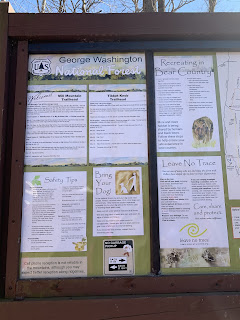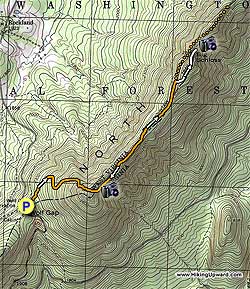Eating in the age of Coronavirus; try out this comfort food, Buckwheat and Mushroom Porridge!
If you’ve never tried buckwheat before, now’s the time! The seeds (or groats) come from a broad leaf plant related to rhubarb and is an excellent source of Fiber, Protein, Iron, Rutin, all the Amino Acids and, best of all, Zinc, to boost your immune system in this time of crisis! Most importantly, it’s gluten free! (Despite the name, it’s not wheat!)
See ingredients below. To prepare, wash 1 8-Oz. cup of buckwheat seeds in cold water and add to 3 cups of boiling water and stock. Cover, reduce heat, and simmer until cooked: about 30-40 minutes. Add cumin, turmeric, mushrooms, potatoes, garlic, ginger, Bay leaves, pepper, and salt. The almond flour is added in the last 10 minutes of cooking. Keep stirring if it’s too thick; add more water as needed. After removing from the heat, add the olive oil, coconut oil, cilantro, and lemon juice.
Ingredients:
1 cup washed buckwheat
4-6 cups of water
2 cups sliced white mushrooms
1 cup julienned potatoes
4 Bay leaves
1 cup vegetable/other stock
1/4 teaspoon ginger paste
1/4 teaspoon garlic paste
1/4 teaspoon cumin powder
1/4 teaspoon turmeric powder
1/4 teaspoon black pepper
Himalayan or other salt to taste
3 tablespoons almond flour
Garnish:
2 teaspoons organic olive oil
2 teaspoons coconut oil
Fresh cilantro or other leaves
1/4 cup lemon juice
“Kuttu”
Note that buckwheat (known as “kuttu” in India), gives a real nutritional boost to the diets of non-meat eaters as it has all the B Vitamins (that vegetarians such as myself) sometimes lack, as well as Magnesium and Manganese.
You can get loose buckwheat from Whole Foods or packaged from Vitacost. They’re equally good, either loose or packaged. I’ve tried both.
Tips
It’s best to use a stainless steel pan with a heavy base so the porridge doesn’t catch on the bottom of the pan. If you’re not a mushroom fan, try asparagus, cauliflower, cabbage or broccoli - fresh, frozen or canned. Note also that the almond flour and potatoes take away the slightly acrid/bitter taste of the buckwheat. My folks loved it, including my sister Lorna who is the cook in the family and rarely likes anyone else’s cooking! The trick, I think, is to overcook just a little bit so it’s slightly sloppy, but ever so delish (even if I say so myself)!
Anglo Indian Recipes
I posted it on Mum’s “Anglo Indian Recipes Group” page on Facebook and she got more than 100 “likes” and 25+ interesting comments from real chefs (unlike me!) who wanted to know what the garnish was: was it “valchi baaji or spinach poi” asked Canada-based Antonio. (They’re all Konkani words - the language spoken in Goa, me Mum’s birthplace)! Apparently it was “poi” which Mum grows in a window box. We sent him the pic and he was so excited - was sure she was India-based, not Flushing, NYC-based! (Wonder if that took away from the magic of the poi?)!
Versatile
Buckwheat can be very versatile. Group members said it sounded like a recipe for “daal” (lentil) or “kichhdi” (rice and lentils). Another said he makes an oat porridge with similar ingredients. The recipe is very adaptable. Besides oats, other grains can be used such as quinoa, millet, and so on, but their protein content is not as high, I think. (Like I said, always looking for protein sources)! My friend Girish from Delhi wrote that they eat “kuttu ki rôti” (buckwheat bread) when they are fasting while others make the flour into pancakes.
Buckwheat can be very versatile. Group members said it sounded like a recipe for “daal” (lentil) or “kichhdi” (rice and lentils). Another said he makes an oat porridge with similar ingredients. The recipe is very adaptable. Besides oats, other grains can be used such as quinoa, millet, and so on, but their protein content is not as high, I think. (Like I said, always looking for protein sources)! My friend Girish from Delhi wrote that they eat “kuttu ki rôti” (buckwheat bread) when they are fasting while others make the flour into pancakes.
Bare Shelves in Supermarkets
One needs to be flexible, especially when supermarket shelves are bare! Carmen, a friend of mine in London, told me that the grocer she goes to had nothing in the pasta/rice aisle except buckwheat, which she bought - and wasn’t it fortuitous that my recipe reached her just then?
One needs to be flexible, especially when supermarket shelves are bare! Carmen, a friend of mine in London, told me that the grocer she goes to had nothing in the pasta/rice aisle except buckwheat, which she bought - and wasn’t it fortuitous that my recipe reached her just then?
These are extraordinary times, indeed! You know things are serious when they shut down the Taj Mahal in India! We’ve been advised to stay home, “shelter in place,” practice social distancing, and do whatever is necessary not to spread the virus. Catch me cooking in other circumstances! Now’s the time, for sure!
New York City
 |
| Buckwheat Porridge with Poi Garnish |














